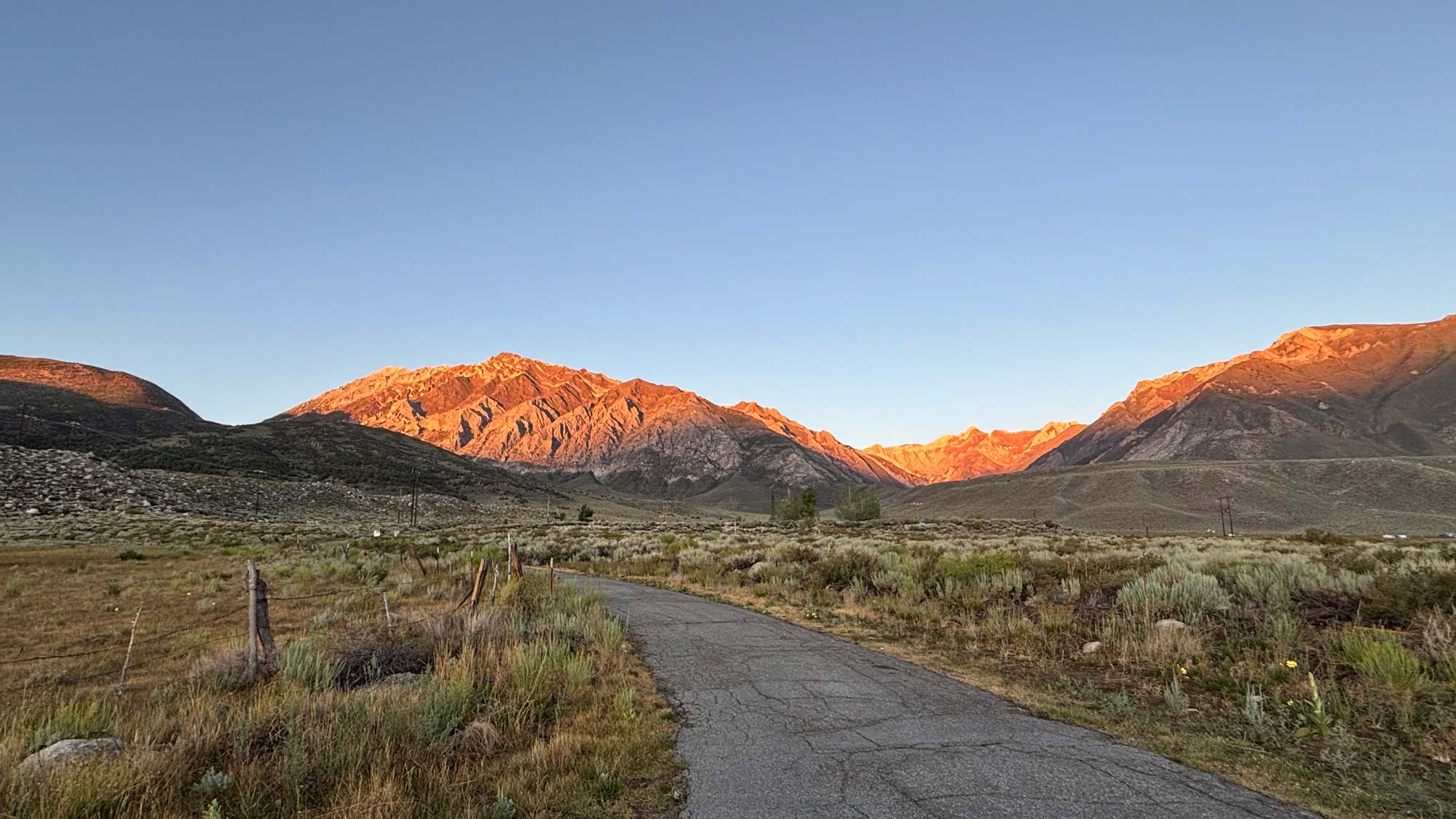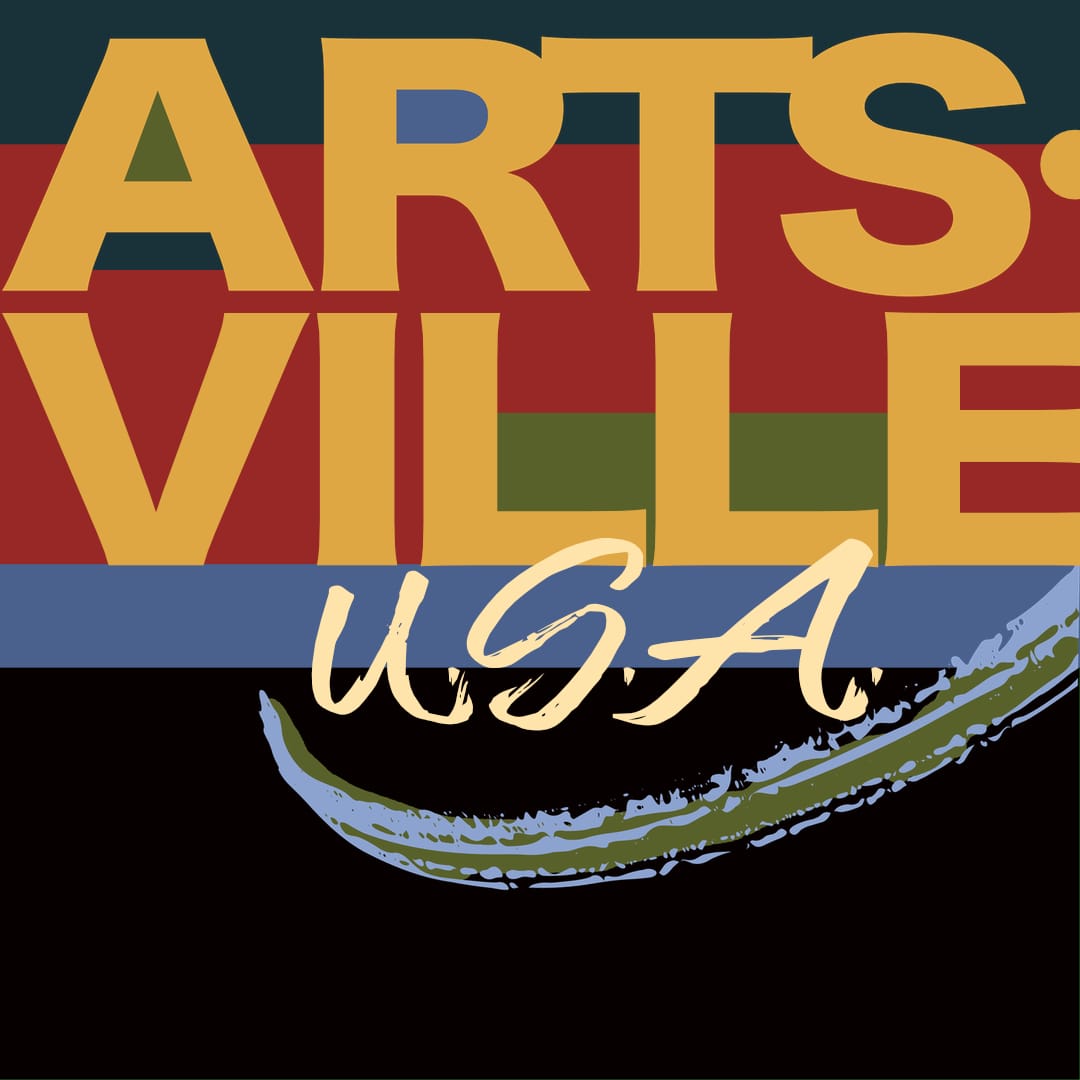Asheville Artist Kenn Kotara Chronicles Mammoth Lakes Residency in Visual Journal
As the summer sun wanes, mixed-media artist Kenn Kotara looks back on his Mammoth Lakes residency in the Sierra Nevada Mountains.

Like many summers before, Asheville artist Kenn Kotara spent this season in the mountains. But instead of the familiar lush greenery and gentle slopes of the Blue Ridge Mountains in Western North Carolina, he found himself surrounded by a higher, more rugged range dotted with giant sequoia trees, crystalline lakes, and lava-capped peaks.
Kenn’s summer residency in California’s Sierra Nevadas unofficially kicked off in May, when he traveled westward to meet his son and explore the breathtaking national parks of Colorado and Utah. After their adventure, Kenn spent some time in Los Angeles before finally making his way to a cozy cabin in Mammoth Lakes, a ski resort town nestled in the Eastern Sierras. Here, he began his summer artist residency in earnest.
With a background in architecture and graphic communications, Kenn creates kaleidoscopic abstractions that map out human systems of understanding, like language, geometry, and science. Partnering with Mono Arts Council during his residency, Kenn conducted a series of workshops that engaged the community in an exploration of mapmaking and texture. His children's cartography class encouraged young participants to think creatively about mapping their experiences, while the adult frottage workshop invited artists to experiment with imprinting techniques, all while fostering a sense of connection to the striking environment surrounding them.
Kenn's summer residency in Mammoth Lakes was made possible by ArtsvilleUSA’s parent nonprofit organization, Arterial.
As the summer sun wanes, Kenn reflects on his time spent in Mammoth Lakes. What follows is a visual journal, accompanied by Kenn Kotara's personal insights into his summer residency.
Arches National Park, Utah

The trip began in Boulder. I flew from Asheville to Boulder, and then my son and I, Julian, decided that we would take a few days to go to some of the national parks in Colorado, starting in Utah. Our first night, we stayed in Moab, and near Moab is one of the most famous national parks, the Arches National Park. They have all these beautiful arches that oftentimes become the most popular scenes. But I like this one because you can see the people all the way down there at the magnitude and scale of this. I mean, they're just tiny.
Arches National Park, Utah, Sketch Journal (Pencil on Grid Paper)

The entire area is populated with these arches, from geological strata, erosion, and so on. Julian and I hiked around there for a good half a day. I'd also planned to record something in my journal each day. I created this sketch that evening, taking the structural format I tend to use and building on this theme.
My belief is that we never start from zero. Even when people say we have a blank canvas, we already have experiences, knowledge, and so on. For me, the grid is just part of that.
Los Angeles, Wilshire Blvd

This is an image from our apartment that we rented for the summer. Julian's internship was downtown, so he only had a 20-minute walk every day to get there. We were on the 13th floor. This is on Wilshire Boulevard.
Los Angeles, Sketch Journal: ‘Centered’ Braille (Pencil on Grid Paper)

The camera kind of warped this one. It's bowing in over in this quite interesting way. Each day, I would wake up and either start something in the morning or in the afternoon in my journal. I decided to do this one, where it repeats the word “Los Angeles” over and over again in Braille. I like that idea of centrality, which has become yet another structural element to jumpstart the idea of where the center of something, even an idea, is.
Los Angeles, Sketch Journal: ‘Trickle' Braille (Pencil and Pen on Grid Paper)

I did several of these during the protests in Los Angeles, and I began thinking about socio-politics and socioeconomics. This is about trickle-down economics, which, of course, was started by Ronald Reagan. And he proposed that the wealthy people's money would trickle down and help the people at the bottom. During the protest, I realized what was happening here. An administration that shores up wealthy people—at whose expense? I kept thinking about the wealthy people up top, which trickles down to basically nothing. I've read and studied that trickle-down economics does not work.
Los Angeles High-Rise, Wilshire Blvd

This is just staring out of my apartment window. I just like the colors, the shapes, the bowing of the glass in there, and its crystalline aspect, but each of the grids has its own cool, unique composition. I kept thinking I could make a series of paintings just from these grid pieces.
Los Angeles, Wilshire Blvd: Frottage Drawing (Pencil on Trace Paper)

This large rubbing is how I prepared myself for heading up to Mammoth Lakes to teach a frottage workshop at the Mono Lakes Arts Council. You can especially see these birds in this one. And then you start looking; it's like there are even more bird heads and shapes. Some are upside down. But I like the idea, it's a psychology of seeing. What do we see? And that gets into the term “pareidolia.” That's really the fascinating part: What do we see? And what are we looking for?
Editor’s note: Pareidolia is the psychological phenomenon of perceiving a recognizable image, often a face, in random patterns or inanimate objects.
Mammoth Lakes, Crowley Lake

This is actually Crowley Lake. You can barely see a little strip there. This is near where I stayed at Scott's cabin, and I was coming back for something. I saw this cloud, and I just had to stop because the expanse of space was just so incredible. And the light was truly phenomenal.
Mammoth Lakes, Sketch Journal: Mountains and Sky (Pencil on Grid Paper)

Using my grid, I started trying to figure out these kinds of mountainous shapes with cloud shapes. Maybe it's a little clichéd, hokey, because I forced it too much. But it's just one of those things that I wanted to get out on paper: How does a cloud form? How does a mountain form? You can find different structural components, patterns, and relationships. Maybe not grid-based, but some other type of structural component.
Mammoth Lakes, Mono Arts Council: Frottage ‘Sip & Draw’ Workshop

This workshop was held at a hotel called Outbound, where locals and tourists are invited to collaborate with local creatives through workshops and programs. This was an evening with adults only, of course, because there's wine involved. This wine rep brought in a couple of wines for us to taste while drawing. It was six women, and I gave them some ideas about what type of workshops we could pull off. They liked the frottage, and I have to agree—it was so much fun.
Mammoth Lakes: ‘Tree Stump’ Frottage Drawing (Pencil on Newsprint Paper)

This is from a tree stump near the cabin, from a frottage drawing. And so I started looking for relationships and shapes, and I began almost seeing them. I'm not sure what this is, but I like this organic shape. Almost like it's moving from the right to the left, and it's kind of trailing. Or it could be an eye, but that's up to the viewer.
Mammoth Lakes, Mono Lake With Tufa

Mono Lake has these incredibly distinct features called tufa. I think the city of Los Angeles had connected a pipe to Mono Lake to use it as water for the city. Mono Lake is one of those lakes with only water coming into it. There is no way for the water to get out. So it has a high salinity. It's something like four and a half times saltier than the actual ocean is now. So what happened was you had these springs underneath. As the fresh water percolated up, it calcified everything. All the minerals in there began to calcify into what are called tufa, these columns. These are dotted all around the lake, which is so cool. Some of these tufa are 12, probably 15 feet high.
Mammoth Lakes, Sketch Journal: Mono Lake Tufa and Clouds (Pencil on grid paper)

The tufa are fragile, so they don't want you to touch them. I had a couple of images where these types of swift birds would perch on top of them, resting while eating all the insects that were attracted to the salty water. Beautiful place.
Bodie, California: Store Window Reflection

This is one of my excursions. There is a ghost town there called Bodie, and it just so happened they have what's called Bodhi Days one Sunday afternoon, where they have people dressed in period clothing playing period music like guitar and fiddles. Whoever owned the store just decided to leave it one day, and left it as it was. I also had a picture of a school room, and there were still just books on the desk as if it was like, “Alright, school's dismissed, and we're all leaving town, by the way.” Because it's at a high altitude, it doesn't rain that often and is dry. Everything is almost preserved 100 percent.
Mammoth Lakes, Sketch Journal: Aspen ‘Eye’ (Sienna Conté Crayon, Graphite)

Here's another Aspen eye. For this one, I used a Conté crayon for the rubbing. Then, I went back in with a pencil to get some of those blackened areas. This took on an embryonic form, almost like something's growing within an egg sack.
Mammoth Lakes, Devils Postpile National Monument

This is called the Devil's Postpile. It’s lava that surfaced and then cooled at such a rate into these hexagonal shapes. It’s incredibly beautiful, probably 50, 60, 70 feet high. You can see that a lot of the pieces had just broken off and fallen down. I want to say each of those pieces was probably 12 to 18 inches in width.
Mammoth Lakes, Rainbow Falls at Devils Postpile National Monument

At the end of the trail was a place called Rainbow Falls. And this was the most magical, ephemeral, ethereal, relaxing place. I sat in the spray from this, about a 60- or 70-foot-high waterfall, and I kept thinking about this idea of living in a grid, the grid of water spray, and I'm thinking about all the information and data in each droplet. You think about the eons of the geological stratification of uplift; what kind of data is in a droplet of water? There's going to be pollution, there might be a seed of sorts, animal material. Who knows? I like that idea of hanging out, and then I'm just swimming in this negative space. But it isn't negative space. It's occupied by something really beautiful.
Los Angeles, MOCA: Frottage Drawing (Sienna Conté Crayon, Graphite)

This is another frottage drawing. This was near MOCA, the Museum of Contemporary Art. I used the red Conté on this because the circles are actually a metal perforated bench outside. Then, the gray on that is from something in the museum, but I wanted to juxtapose the black, the gray, and the red. I'm actually using two different colors to see what might happen and how the intertwining of the two shapes the forms.
This copy has been edited for length and clarity. All images published with permission of Kenn Kotara.
